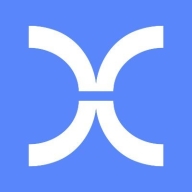

Trend Vision One and IONIX are competing solutions in the technology sector, each with distinct strengths. Trend Vision One appears to have the upper hand in customer support and affordability, whereas IONIX stands out for its advanced features that many find justify a higher cost.
Features: Trend Vision One provides robust network security, real-time threat detection, and dashboards summarizing vulnerabilities. IONIX offers advanced AI-driven analytics, extensive customization options, and a sophisticated feature set, which enhances its functionality and appeal to those needing tailored security solutions.
Room for Improvement: Trend Vision One could enhance its detection and response capabilities beyond the endpoint and network inclusion. Additional behavior analytics and integration with third-party tools could be beneficial. IONIX might improve by simplifying its setup and enhancing its user interface for greater ease of use. More frequent updates and reductions in false positives would also increase IONIX's effectiveness.
Ease of Deployment and Customer Service: Trend Vision One is well-regarded for its seamless deployment and comprehensive support channels, ensuring easy integration with minimal disruptions. IONIX, while more complex to set up, provides extensive documentation and skilled support that assist during the implementation phase to mitigate deployment challenges.
Pricing and ROI: Trend Vision One is cost-effective, attracting budget-conscious buyers with lower setup costs and timely return on investment. IONIX, despite higher initial expenses, offers a strong ROI due to its cutting-edge features. Customers prioritizing advanced features and customization find value in IONIX despite its higher costs.

IONIX Attack Surface Management delivers laser-focus into your most important exploitable attack surface risks - including deep into the digital supply chain.
IONIX ASM – Widest Coverage, Sharpest Focus
IONIX is a leader in Attack Surface Management, focused on the discovery of every internet-facing asset and the ways those assets are connected, deep into an organization’s digital supply chain, shedding light on only the most important risks to your business, and providing simple-to-follow recommendations to rapidly remediate exploitable threats and reduce attack surface risk.
What is Attack Surface Management?
Attack surface management (ASM) is the continuous discovery, analysis, remediation and monitoring of cybersecurity vulnerabilities and misconfigurations that make up an organization’s potential attack surface.
IONIX Benefits:
Discover more – get full attack surface coverage
Assess further – focus only on what’s important to fix and avoid noisy alerts
Prioritize smarter – Not an inventory of assets, a connected map of exploitability
Remediate faster – MTTR of days, not months
Protect automatically – take control of exploitable assets before hackers do
Trend Vision One offers comprehensive protection for endpoints, networks, and email with centralized visibility. It is valued for its attack surface management, real-time threat detection, integrated management, ease of deployment, and user-friendly interface.
Trend Vision One provides a sophisticated security platform combining endpoint, network, and email protection with features like virtual patching and advanced AI capabilities. Its centralized management and integration with platforms like Office 365 and Azure make it an attractive option for organizations needing streamlined workflows and efficient risk management. While it boasts robust integrations and ease of use, enhancements are needed in reporting, tool integration, and reducing false positives. Users call for better support infrastructure, faster response times, and improved threat intelligence capabilities. Despite some complexity, its AI and ML features significantly enhance threat detection and response.
What Features Define Trend Vision One?
What Benefits Should Users Look For?
Trend Vision One is implemented in industries that require endpoint protection, ransomware defense, and incident response, being flexible for both on-premises and cloud environments. It is used to monitor servers, networks, and endpoints, providing features like email protection, behavioral detection, and threat visibility. Organizations benefit from AI and ML, improving their security posture and response capabilities.
We monitor all Attack Surface Management (ASM) reviews to prevent fraudulent reviews and keep review quality high. We do not post reviews by company employees or direct competitors. We validate each review for authenticity via cross-reference with LinkedIn, and personal follow-up with the reviewer when necessary.